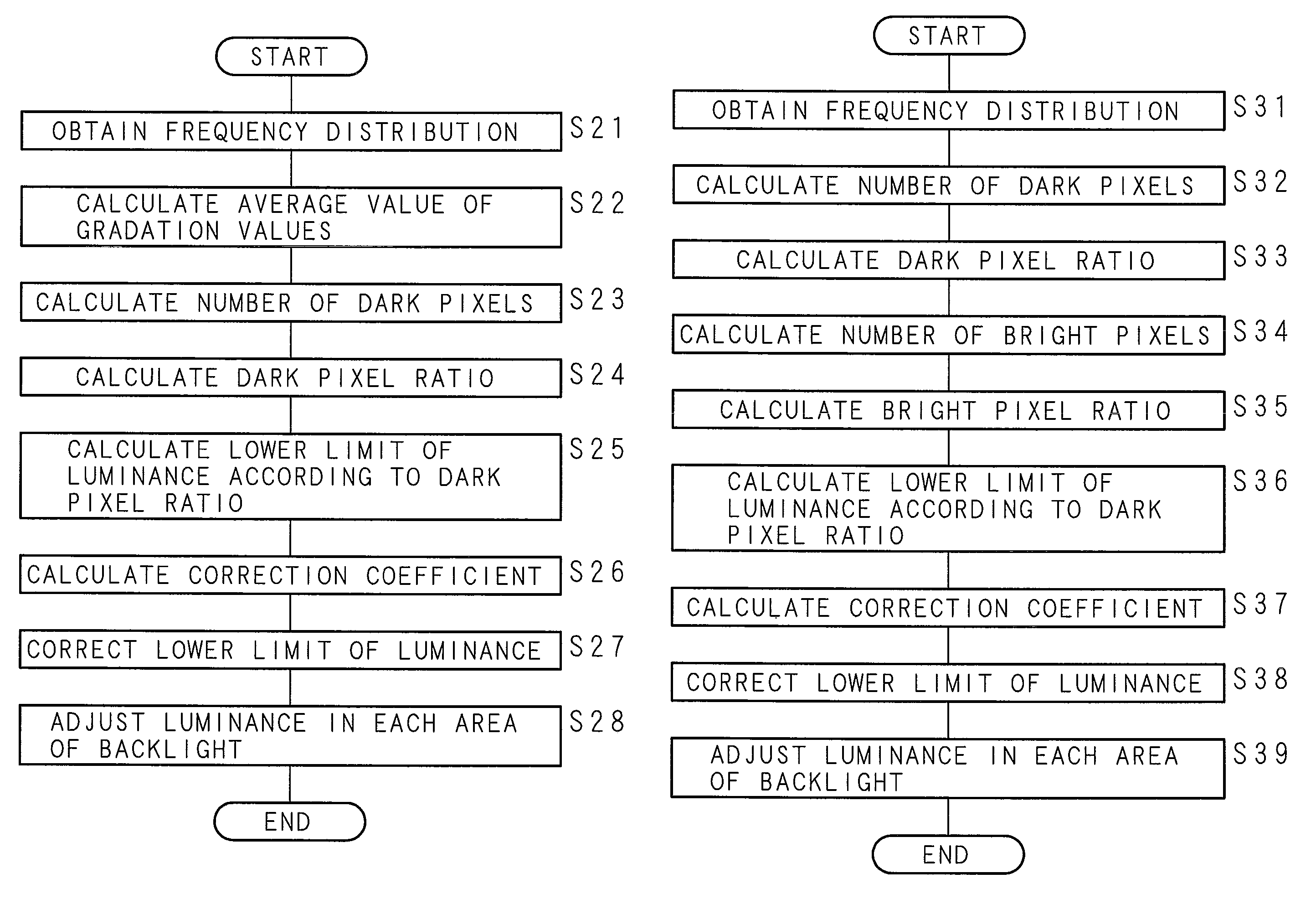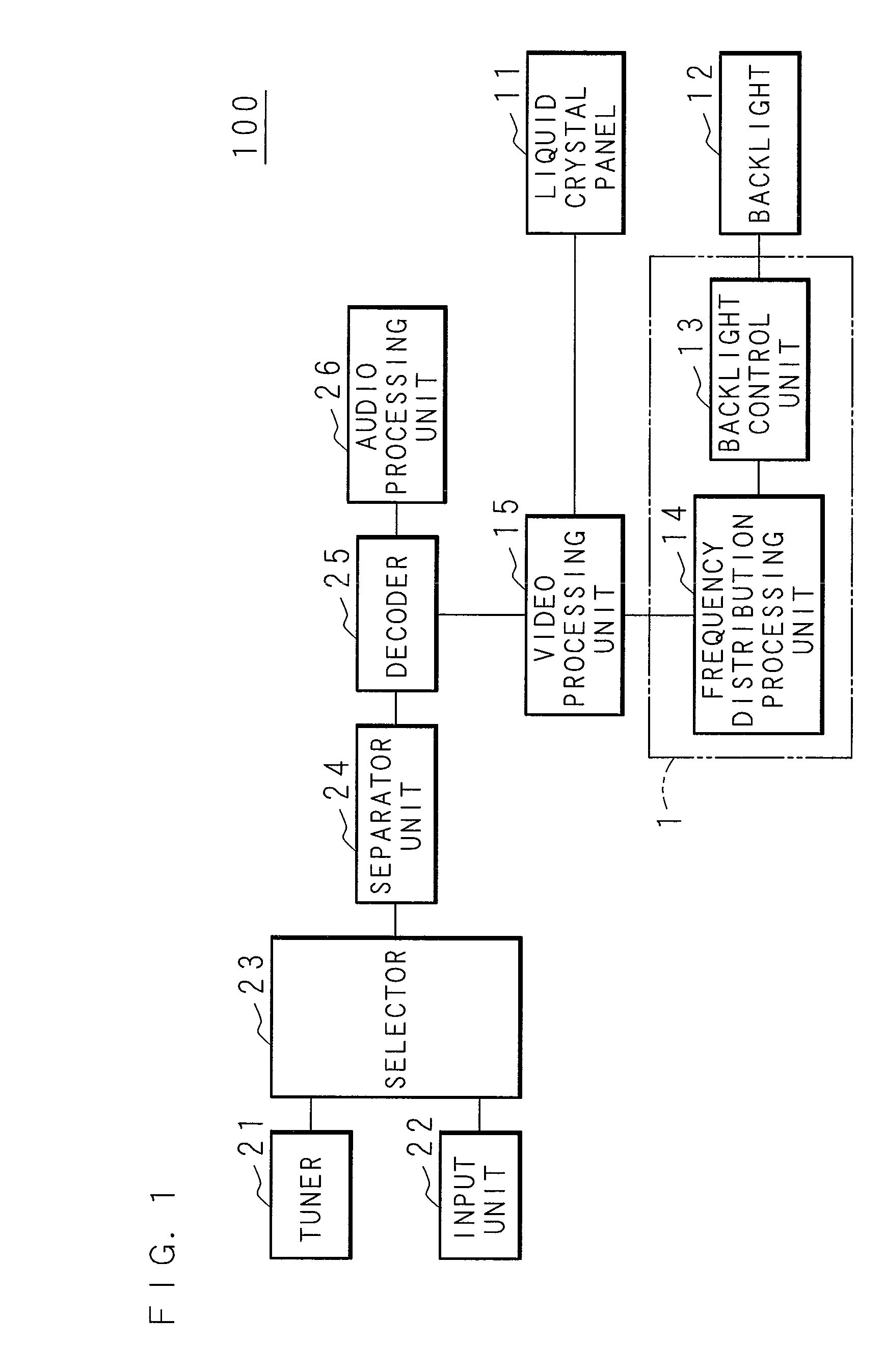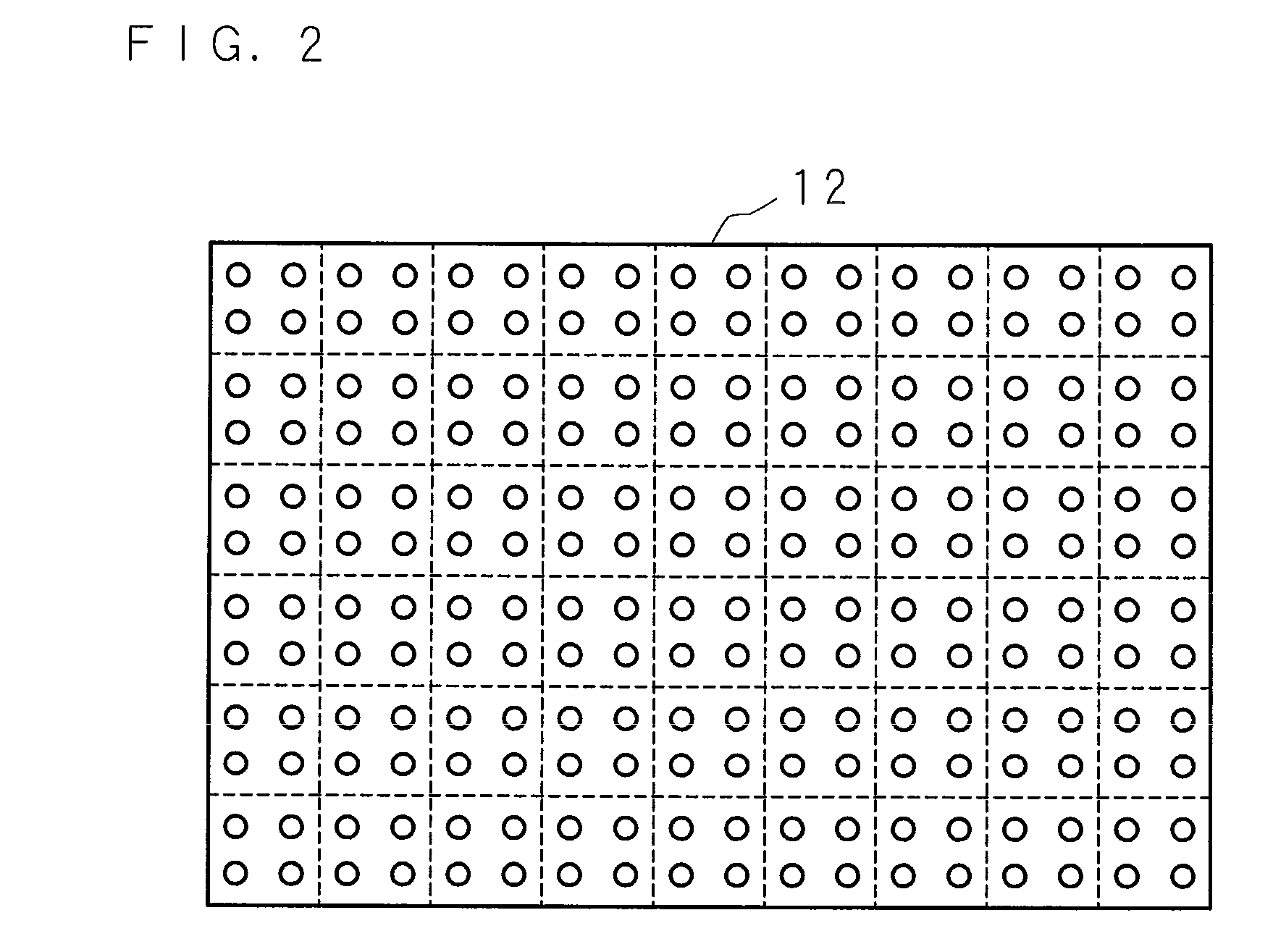Backlight luminance control apparatus and video display apparatus
a technology of luminance control and video display, applied in the direction of instruments, static indicating devices, etc., can solve the problem of half-tone video image susceptible to luminance blur, and achieve the effect of reducing power consumption and increasing luminan
- Summary
- Abstract
- Description
- Claims
- Application Information
AI Technical Summary
Benefits of technology
Problems solved by technology
Method used
Image
Examples
embodiment 1
[0042]FIG. 1 is a block diagram showing the internal structure of a video display apparatus of Embodiment 1. A video display apparatus 100 of Embodiment 1 comprises a tuner 21, an input unit 22, a selector 23, a separator unit 24, a decoder 25, an audio processing unit 26, a video processing unit 15, a liquid crystal panel 11, a backlight 12, and a luminance control apparatus 1.
[0043]The tuner 21 receives broadcast waves with an antenna (not shown), and decodes the received broadcast waves into input data. The input unit 22 obtains input data inputted from an external device (not shown), such as a recorder device or a tuner device. The input data includes video data, audio data, and data for an electronic program guide (EPG), and the video display apparatus 100 of Embodiment 1 displays a video image based on the video data. The video display apparatus 100 can be configured to handle digital data, or analog data, as the input data.
[0044]The tuner 21 and the input unit 22 are connecte...
embodiment 2
[0061]In Embodiment 1, the lower limit of luminance is calculated according to the dark pixel ratio in a video image. However, if a high lower limit of luminance is set for a video image having low brightness on the whole, black floating occurs in the video image, and the quality of the video image is lowered. Embodiment 2 illustrates a mode in which the lower limit of luminance of the backlight 12 is calculated according to the brightness of the whole video image. Since the internal structure of the video display apparatus 100 according to Embodiment 2 is the same as that in Embodiment 1, the explanation thereof will be omitted.
[0062]FIG. 7 is a flowchart showing the processing steps carried out by the video display apparatus 100 of Embodiment 2. The video processing unit 15 generates a video signal and outputs it to the frequency distribution processing unit 14. The frequency distribution processing unit 14 obtains the frequency distribution of gradation values of the respective p...
embodiment 3
[0069]In Embodiment 1, the lower limit of luminance in a plurality of areas of the backlight 12 is set smaller as the dark pixel ratio in the video image increases. By the way, among video images, there is a video image containing a large number of both of dark pixels and bright pixels, but not many pixels having intermediate gradation values. In Embodiment 1, when the dark pixel ratio in the video image is high, luminance blur tends to occur, and further when there are a large number of bright pixels in the video image, luminance blur is noticeable, and the quality of the video image is lowered. Embodiment 3 illustrates a mode in which the lower limit of luminance of the backlight 12 is calculated according to both the amount of dark pixels and the amount of bright pixels. Since the internal structure of the video display apparatus 100 according to Embodiment 3 is the same as that in Embodiment 1, the explanation thereof will be omitted.
[0070]FIG. 9 is a flowchart showing the proce...
PUM
 Login to View More
Login to View More Abstract
Description
Claims
Application Information
 Login to View More
Login to View More - R&D
- Intellectual Property
- Life Sciences
- Materials
- Tech Scout
- Unparalleled Data Quality
- Higher Quality Content
- 60% Fewer Hallucinations
Browse by: Latest US Patents, China's latest patents, Technical Efficacy Thesaurus, Application Domain, Technology Topic, Popular Technical Reports.
© 2025 PatSnap. All rights reserved.Legal|Privacy policy|Modern Slavery Act Transparency Statement|Sitemap|About US| Contact US: help@patsnap.com



